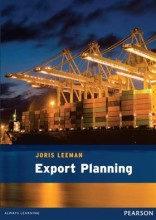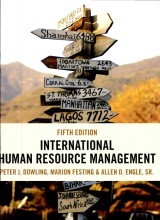Summary: Export Planning | 9789043017084 | Joris Leeman
- This + 400k other summaries
- A unique study and practice tool
- Never study anything twice again
- Get the grades you hope for
- 100% sure, 100% understanding
Read the summary and the most important questions on Export Planning | 9789043017084 | Joris Leeman.
-
1 Introduction export planning.
This is a preview. There are 5 more flashcards available for chapter 1
Show more cards here -
Out which 4 phases consist export planning?
Export Policy - internal strategy development (does the company want to export?)
Export Audit - the market entry analysis of the company (which countries are interesting)
Export Plan - international marketing plan
Export Roll-out - implementation of the export plan -
step 1 company overview
provides an company overview: its history, sales by devision and region, organisation structure, main competitors
visson/mission: vision describes the big picture of the company/ mission is how to achieve the vision
business definition: describes in which the business is active, whom they serve and how
company objective: how the company wants to execute its mission (long-term)
product lines and markets: quick overview of company's sales by product and devision and sales by geographic area -
step 2 internal and external analysis
internal analysis
organisation structure: provides first overview. functions, regions, dicision lines
7s model: model that described 7 factors to organise a company in an effective way
capabilities: is the company able of going international. size of the firm, company culture, experience
external analysis
DESTEP: demographic, economic, social, technological, ecological, political
trend anaysis: wach the trends you see from the DESTEP -
step 4 country analysis
pre-filter phase: a first assessment of the country attractiveness is made (is it easy to import, can they afford it)
filter 1: rough scan. DESTEP can be used together with climate and distance. gives an overview of potential export countries.
filter 2: a detailed market survat is made. includes consumer demand, potential market size, level of competition, marketing mix setup. -
1.2 Country position and market attractiveness.
This is a preview. There are 12 more flashcards available for chapter 1.2
Show more cards here -
What are the six factors that Micheal Porter presents which leads to competitive advanvantage of nations?
- Factor advantages
- Type of domestic demand
- National competitiveness
- Network of internationally competing suppliers
- Coincidental factors
- Governmental policy. -
What are factor advantages?
Basics: advantages in raw materials, climate, location, low& middle level of educated workers.
Advanced: modern telecommunication, modern infrastructure, highly educated workforce and specialised centres. -
Network of internationally competing suppliers.
Allows for faster information input of new technologies, insights and innovations.
-
On which level do countries compete with each other?
On tourism
Medication& health centres
Logistics ports and distribution
Financial centres
Innovation and centre of excellence in specific technology fields. -
What are the 4 types of the EPRG model?
1. Ethnocentric, home market
2. Polycentric, locally oriented
3. Region-centric, regional market
4. Geocentric, transnational -
2 Internal and external analysis.
-
2.1 Export Policy
This is a preview. There are 1 more flashcards available for chapter 2.1
Show more cards here -
What is a Export Policy?
A strategic framework with principles and international strategic business directions that form the basis for the export initiatives.
- Higher grades + faster learning
- Never study anything twice
- 100% sure, 100% understanding

































